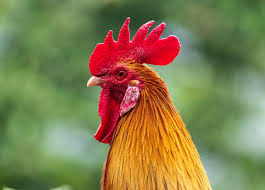Oxytetracycline Premix
Name:
Oxytetracycline Premix / Oxytetracycline Injection / Oxytetracycline HCl Injection
Common Capacity:
Premix:
- 100g/bag
- 500g/bag
- 1000g/bag (1kg/bag)
Injection:
- 50ml/bottle
- 100ml/bottle
Common Concentration:
Premix:
- 5%
- 7.5%
- 10%
- 20%
- 50%
Injection:
- 5%
- 10%
- 20%
- 30%
Oxytetracycline HCl Injection:
- 5%
- 10%
Applicable Animals:
Oxytetracycline is a broad-spectrum tetracycline antibiotic with strong inhibitory effects on various pathogens including Gram-positive bacteria, Gram-negative bacteria, mycoplasma, rickettsia, chlamydia, and spirochetes. It is suitable for the treatment and prevention of bacterial infections in various farmed animals.
Applicable Animals in Global Animal Husbandry:
- Poultry (Chickens, Ducks, Turkeys): Pullorum disease, fowl cholera, chronic respiratory disease, E. coli disease, salmonellosis, infectious coryza, etc.
- Pigs (Piglets, Growing-Finishing Pigs, Breeding Pigs): Swine pasteurellosis, contagious pleuropneumonia, enzootic pneumonia, yellow and white scour in piglets, E. coli disease, salmonellosis, streptococcosis, paratyphoid, etc.
- Cattle and Sheep (Calves, Lambs, Dairy Cows, Beef Cattle): Bovine hemorrhagic septicemia, pasteurellosis, contagious bovine pleuropneumonia, brucellosis, postpartum infections, mastitis, metritis, lamb dysentery, mycoplasma pneumonia, etc.
- Aquatic Animals (Fish, Shrimp): Bacterial enteritis, gill rot disease, red skin disease, printing disease, etc.
- Pets: Respiratory, digestive, and urinary tract infections caused by sensitive bacteria, as well as mycoplasma and chlamydia infections. (Note: Tablets or capsules are more commonly used for pets, this mainly addresses the potential use cases for injections and premixes.)
- Special Farming Animals (e.g., Rabbits): Respiratory infections, digestive infections, etc.
Usage and Dosage:
The usage and dosage of oxytetracycline depend on the dosage form, animal species, age, body weight, severity of the condition, and veterinary advice.
1. Premix (Mixed with Feed): 6 Typically mixed thoroughly with feed before administration.
- Poultry: For 10% concentration, add 200-500g per 1000kg of feed (i.e., 20-50g Oxytetracycline per ton of feed).
- Pigs: For 10% concentration, add 300-600g per 1000kg of feed (i.e., 30-60g Oxytetracycline per ton of feed).
- Cattle and Sheep: For 10% concentration, add 400-800g per 1000kg of feed (i.e., 40-80g Oxytetracycline per ton of feed).
- Aquatic Animals: Administer by mixing into feed in appropriate proportions, depending on the specific disease and species.
- Course of Treatment: Administer for 5-7 consecutive days, or as directed by a veterinarian.
2. Injection (Intramuscular or Intravenous Injection): 1
- Intramuscular Injection:
- Livestock (Cattle, Pigs, Sheep, etc.): 5-10 milligrams (mg) of oxytetracycline per kilogram (kg) of body weight, once daily. For severe infections, the dose may be increased or given twice daily.
- Example for 20% Oxytetracycline Injection: Inject 0.025-0.05 milliliters (ml) per kg of body weight.
- Intravenous Injection: Limited to certain water-soluble oxytetracycline preparations, typically used for severe cases, must be diluted and administered slowly by intravenous drip, strictly following veterinary guidance to prevent adverse reactions.
- Course of Treatment: Generally 2-3 days, can be extended to 5 days for severe infections.
Dosage by Growth Stage:
- Young Animals: Used for prevention and treatment of piglet yellow and white scour, calf/lamb diarrhea, etc. Doses should be precise to avoid overdose.
- Growing-Finishing Animals: Can be used to prevent respiratory and digestive diseases, especially during stress (e.g., regrouping, weaning) or feed changes. Dosage is usually at maintenance therapeutic levels.
- Breeding Animals: Used for prevention and treatment of reproduction-related infections, such as uterine infections, mastitis, etc.
- High-Producing Animals: Pay attention to withdrawal periods after administration to ensure the safety of animal products.
Applicable Diseases and Symptoms:
Oxytetracycline is mainly used for the treatment of various infections caused by bacteria sensitive to tetracycline drugs:
- Respiratory System Diseases: Bacterial pneumonia, bronchitis, pleuropneumonia, enzootic pneumonia, chronic respiratory disease, infectious coryza, etc., characterized by coughing, nasal discharge, dyspnea, wheezing.
- Digestive System Diseases: Bacterial enteritis, gastroenteritis, yellow and white scour in piglets, paratyphoid, salmonellosis, E. coli disease, etc., characterized by diarrhea, vomiting, loss of appetite, dehydration.
- Urogenital System Diseases: Metritis, mastitis, cystitis, etc.
- Systemic Infections: Septicemia, pasteurellosis, streptococcosis, brucellosis.
- Other sensitive infections: Mycoplasma infections, rickettsial diseases, chlamydial diseases, anaplasmosis, etc.
Precautions:
- Resistance: Long-term or improper use of oxytetracycline can easily lead to bacterial resistance. Use as directed by a veterinarian to avoid misuse.
- Photosensitivity: Animals may develop photosensitivity during treatment; avoid prolonged exposure to strong light.
- Hepatotoxicity and Nephrotoxicity: High doses or prolonged use may adversely affect liver and kidney function. Use with caution or adjust dosage in animals with liver or kidney impairment.
- Gastrointestinal Reactions: Oral administration may cause gastrointestinal discomfort, such as anorexia, nausea, and vomiting.
- Homogenous Mixing: Premixes must be thoroughly mixed with feed to ensure accurate drug intake.
- Interaction with Cations: Avoid simultaneous use with drugs containing calcium, magnesium, aluminum, iron, zinc, and other metal ions, as these ions can chelate with oxytetracycline and impair absorption.
- Injection Precautions:
- Injectable solutions should avoid direct contact with skin or mucous membranes, as they may cause irritation.
- Temporary pain and edema may occur at the injection site. Deep intramuscular injection can reduce local irritation.
- Intravenous injection should be slow to avoid cardiovascular depression.
- Pregnancy and Lactation: Use in late-pregnancy animals may affect fetal bone and tooth development. In lactating animals, oxytetracycline passes into milk. The benefits and risks should be weighed before use.
- Storage: Store protected from light, sealed, in a cool, dry place.
Contraindications:
- Contraindicated in animals with a known hypersensitivity to tetracycline-class drugs.
- Contraindicated in animals with severe hepatic or renal dysfunction.
- Use with caution for oral administration in ruminants after rumen development is complete (except for young ruminants), as it may affect rumen microbial activity.
- Long-term or high-dose use in young animals may affect normal bone and tooth development, causing teeth discoloration.
Post-Administration Care:
- Observe Animal Response: Closely observe the animal’s clinical symptoms, appetite, mental status, and injection site reactions during and after administration. Contact a veterinarian immediately if any abnormalities are noted.
- Withdrawal Period Management: Strictly adhere to the withdrawal period specified in the product instructions to ensure animal products (meat, eggs, milk) are free of drug residues and meet market standards.
- Supportive Therapy: For severely infected animals, in addition to antibiotic treatment, supportive care such as fluid therapy, electrolyte balance, and nutritional support should be combined.
- Improve Husbandry Management: Maintain a good breeding environment, control temperature and humidity, enhance ventilation, and reduce stress to aid animal recovery and disease prevention.
- Biosecurity: Isolate sick animals and thoroughly disinfect contaminated premises to prevent disease spread.
- Record Keeping: Keep detailed records of medication information, including animal type, dosage, course of treatment, batch number, manufacturer, and treatment efficacy, for traceability.
Applicable Animals
Animal species suitable for this veterinary medication




